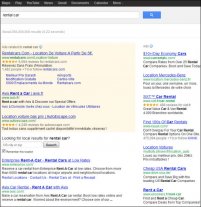We’re aware of the growing disillusionment with social media companies. Some say that the mistakes of the last bubble are being repeated all over again, that we shouldn’t be engaging in Users First, Revenues Later. The problem, I feel, is that we’re approaching social media monetization the same way we’ve approached traditional media monetization. In fact, third-party monetization has undergone a radical change since the emergence of the internet.
Shift from Static to Dynamic context:
Context is the basis for relevance in third-party monetization. For relevance to be high, the message to the user needs to be in the user’s context. In traditional media, the context was static based on the content surrounding it (magazine articles, TV show, etc.) which was taken as a proxy for the expected demographic and interests of the user.
Dynamic context is based on three parameters that define user choices at any point:
- Intent,
- Location and
- Time
The first significant move to dynamic context was led by Google when it started monetizing intent (AdWords). The second big move was led by the emergence of GPS-enabled mobile which added location and time to the mix. In recent times, the social graph and the interest graph have been generated to, again, flesh out the context of the user based on the sum of her online activities while valuing the predominance of the current activity.
Shift from eyeballs to interactions:
Here’s a quick definition of Social Media to set the context for this discussion. Social Media is essentially:
Social: Interactions among participants
Media: Monetization of a big audience
The traditional media model grabs eyeballs and sells them to advertisers. There are no interactions between users in traditional media, so this model serves it well. The eyeballs serve as great context for advertisers. Social media, on the other hand, has more than eyeballs. The actual interactions are the new context created.
The problem with Facebook’s advertising is that it is still trying to monetize the traditional media way: by monetizing eyeballs. Monetizing eyeballs is fine when your users are unconnected individual silos and interacting only with content but when users are connected and constantly interacting in an ever-changing context, monetization should target interactions. Interactions define the real-time context of the user.
To Facebook’s credit, it’s making advertising more ‘personalized’ by making it more granular than on any other media form, but it still is out of context on a page of conversations where the content of the conversation may have nothing to do with the ad.
A note on interactions
Let’s classify platform interactions into two broad categories:
- Usage Interactions: The primary reason users use the product. e.g. users interact with other users through status updates on FB
- Monetization Interactions: The interaction that makes money. e.g. advertisers interact with users by layering ads on their profile page.
The two may overlap as well. e.g. in the case of a marketplace like eBay or a Freemium model like Flickr, both the above are manifested in the same interaction.
Also, a platform may have multiple instances of each interaction type. e.g. Spotify has multiple monetization interactions: Advertising and Freemium.
Comparing two networks: Some Apples are doing better than others
Given the above framework, the problem with Facebook is that it’s monetization interaction is not in the same context as its usage interaction.
In case of Facebook, the monetization interaction (Advertiser – User) is targeting the static Facebook profile. The usage interaction (User – User), on the other hand, is often completely unrelated to the profile and is in the context of the dynamic status update. The content of the status update has little or nothing to do with the profile.
Unlike Facebook, LinkedIn’s monetization interaction (Recruiter – User) is in the context of its usage interaction (User-User). The usage interaction involved two users connecting around the resume that is created on the profile. And, well, the monetization interaction involves a recruiter connecting around the same resume or a user asking for enhanced access to another based on the resume/profile (via InMail).
Apples and Oranges but Oranges still doing good
It’s a bit unfair to compare Facebook and Google, but Google does a brilliant job of monetizing context. The usage is based on a query and so is the monetization. Queries are less of a semantic challenge as compared to peer-to-peer conversations. Facebook’s challenge lies in the fact that if it were to go down the path of monetizing such real-time intent, it would face two potential challenges:
1) It’s already creepy ‘big brother’ image would raise further privacy alarms
2) Analyzing context from semantics remains an unsolved problem and runs the risk of yielding false positives which would only result in increased noise in the system
There’s a lot of talk about how discovery is moving from search to social i.e. from the query to the status update. However, the problem is that the platform doesn’t own as much information about the status update as it does about the query.















